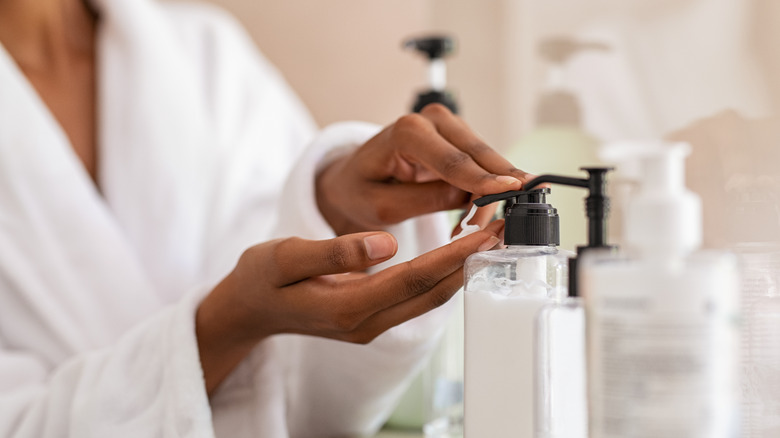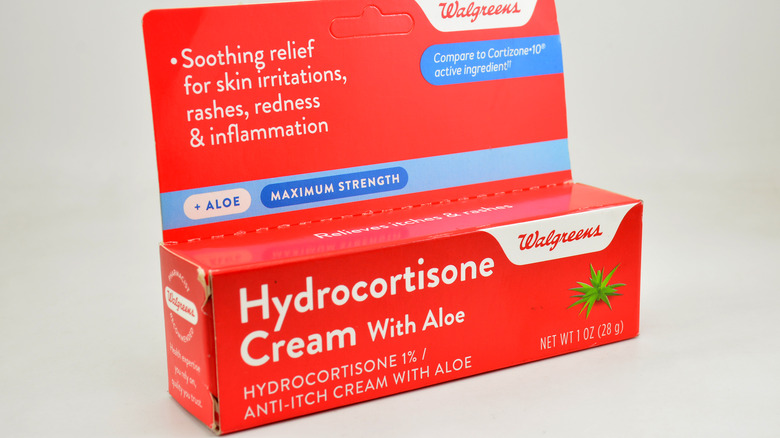Skincare Products You Need If You're Diabetic
When you live with diabetes, you are forced to endure many different discomforts. There are several common signs of diabetes, such as frequent urination and thirst, blurry vision, exhaustion, tingling of feet and hands, and losing weight without trying, as per the CDC. However, one symptom that gets overlooked has to do with the skin. Those with diabetes often have dry, itchy skin.
With Type 1 diabetes, an autoimmune disease with genetic factors, the body doesn't make insulin on its own (via Healthline). In Type 2 diabetes, the body does make some insulin but doesn't utilize it as it should. The research is still out on whether Type 2 diabetes is also an autoimmune disease.
Regardless of which type you have, it takes vigilant management to keep uncomfortable symptoms like itchy skin from flaring. Luckily, with the right skincare products, such as moisturizers, those with diabetes can care for their skin properly, making it soft and smooth, which could also help prevent infection.
Stabilize blood sugar and moisturize diabetic skin
When you have Type 2 diabetes, you may notice dark patches and hyperpigmentation, particularly in skin folds, scaly blotches, blisters, and red bumps (via Healthline). This is mainly caused by high blood sugar levels that interfere with the skin receiving proper circulation and nutrients. The first thing to do when treating skin in diabetics is to stabilize blood sugar levels with help from your doctor.
The next thing to do is nourish and support your skin. It's important to get to know your skin and check it regularly for any signs of redness or rashes. Be sure to shower daily and avoid hot water and bathing, both of which can contribute to dry skin. Moisturizing daily is paramount to preventing dry and cracked skin, which can lead to infection.
The best moisturizers are the ones that contain ceramides because they hold moisture, as per WebMD. Ceramides are fatty acids that occur naturally in the body and help keep pollution and toxins from entering the skin. When you apply synthetic ceramides used in lotion and creams, you are boosting your natural supply. Another ingredient to look for is urea. Similar to petroleum jelly, this emollient is especially good for cracked heels since it holds water in the skin by creating an oil layer, which results in satiny soft skin, according to WebMD.
When symptoms flare, you need these products
From time to time, just as your blood sugar will fluctuate, so will your skin issues. You may be following a regular routine that seems to work well when a cold or virus, patch of cold weather, or blood sugar levels may throw your skin off and you find yourself dealing once again with a variety of discomforts.
To treat the itch, always keep a tube of 1% hydrocortisone on hand as a topical treatment, as per Healthline. This will help with the itch from dry skin and rashes. If the itch stems from a fungal infection, such as an athlete's foot or ringworm, an over-the-counter antifungal medication like clotrimazole should do the trick.
When you notice any kind of irritation, treating it immediately will help prevent it from worsening. Always be proactive to guard against dryness. Besides regularly moisturizing, drinking plenty of water will also help your skin stay hydrated and so will using a humidifier to combat dry indoor air.


